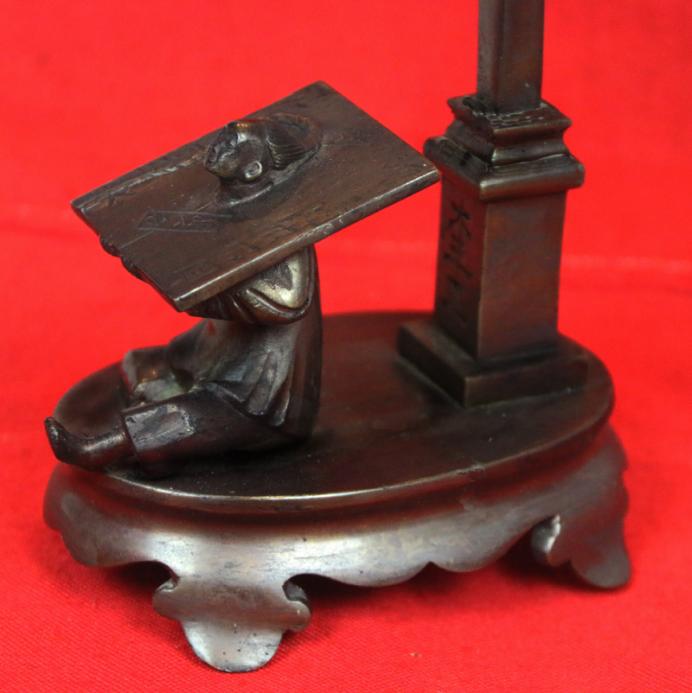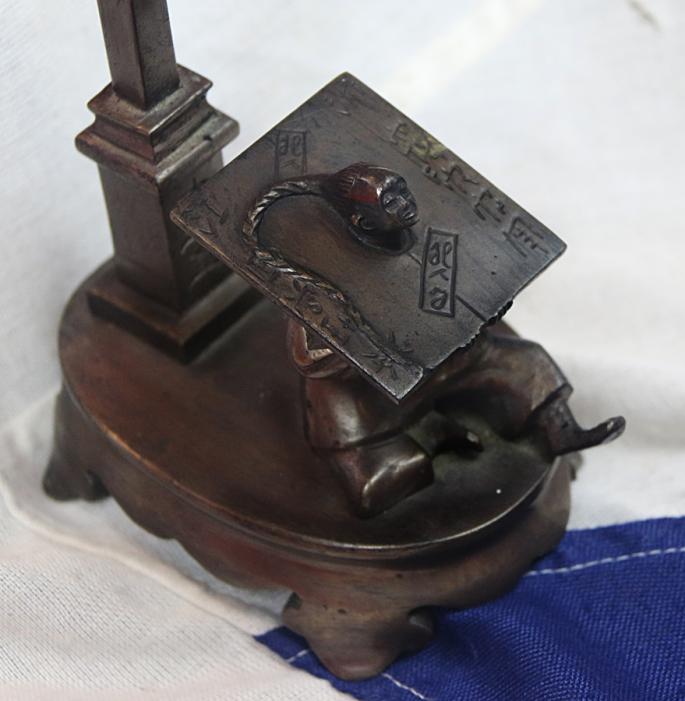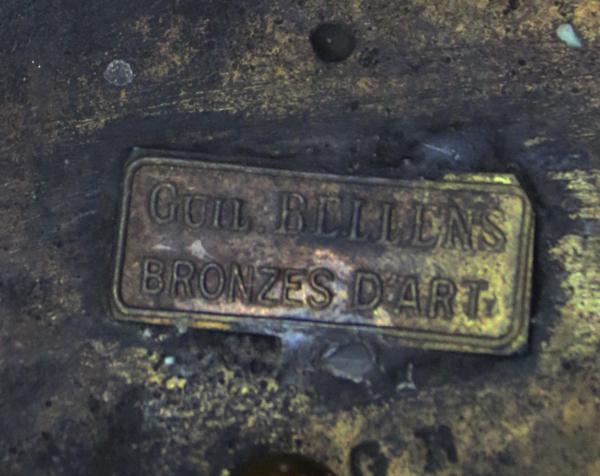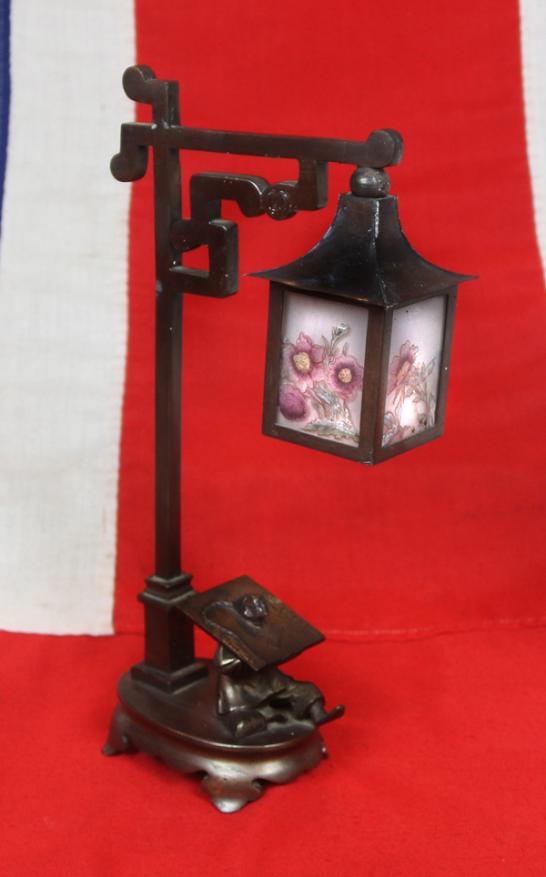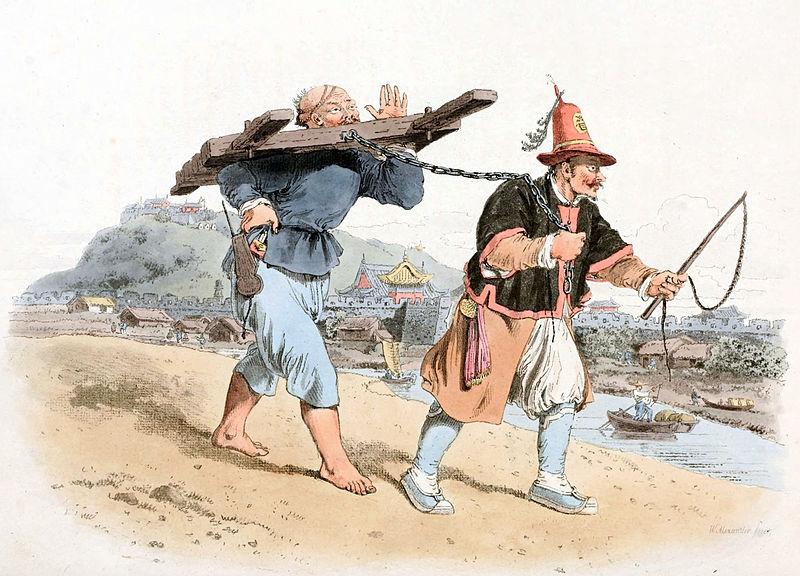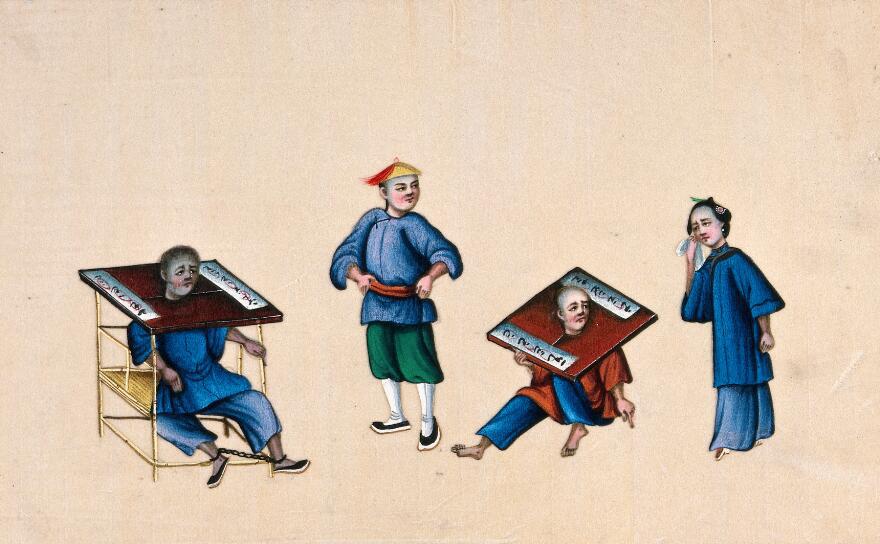A Most Incredible and Intriguing European Art Deco Bronze Table Lamp, Decorated With the Subject of a Prisoner in an Ancient Chinese 'Cangue' Torture Device Beneath a Lamp
A seated figure with the torture block of a Chinese 'cangue' . Likely designed from small portable carved wooden figures purchased and brought back to Europe by travellers to the Treaty Port of Ningbo in China, sometime in the early 20th century. The European fascination with all things oriental, from the exotic east, has influenced western art considerably for centuries, and it is frequently known as Chinoiserie Art, although the depiction of Chinese torture implements was somewhat niche, but they were especially popular, and depicted in decorative art, paintings, prints and sculpture. But this is the first time we have seen an old rendition of one in the form of a beautiful bronze table lamp. This very nice quality and fascinating piece of object d'art in bronze and enamel painted glass, is one of those incredible creations. This kind of tortuous affair using the cangue was usually unique to the far east from the ancient period up to relatively modern times. In fact the legendary Genghis Khan himself was imprisoned in such a terrible device when he was captured by another mongol leader as a youth before he grew into becoming the world greatest conqueror.
the bronze is signed at the reverse base, the front lamp base bears Chinese script, as does the cangue panel around the prisoners neck, which often details the prisoner's crimes, and the French bronze founder's label is on the underneath.
Although there are many different forms, a typical cangue would consist of a large, heavy flat board with a hole in the centre large enough for a person's neck. The board consisted of two pieces. These pieces were closed around a prisoner's neck, and then fastened shut along the edges by locks or hinges. The opening in the centre was large enough for the prisoner to breathe and eat, but not large enough for a head to slip through. The prisoner was confined in the cangue for a period of time as a punishment. The size and especially weight were varied as a measure of severity of the punishment. The Great Ming Legal Code (大明律) published in 1397 specified that a cangue should be made from seasoned wood and weigh 25, 20 or 15 jīn (roughly 20–33 lb or 9–15 kg) depending on the nature of the crime involved. Often the cangue was large enough that the prisoner required assistance to eat or drink, as his hands could not reach his own mouth, or even lie down. The word "cangue" is French, from the Portuguese "canga," which means yoke, the carrying tool has also been used to the same effect, with the hands tied to each arm of the yoke. Frequently translated as pillory, it was similar to that European punishment except that the movement of the prisoner's hands was not as rigorously restricted and that the board of the cangue was not fixed to a base and had to be carried around by the prisoner. the condition overall is very good, the lamp has four hand painted enamel glass panels but the interior somewhat concealed one has been long past repaired in the mid section 13.5 inches high x 7 inches deep, x 3.2 inches wide. If one wishes to use it for illumination once more It will need safely rewiring to approved standards, what remains of any past wiring should not be used under any circumstances.
Code: 23902
545.00 GBP


